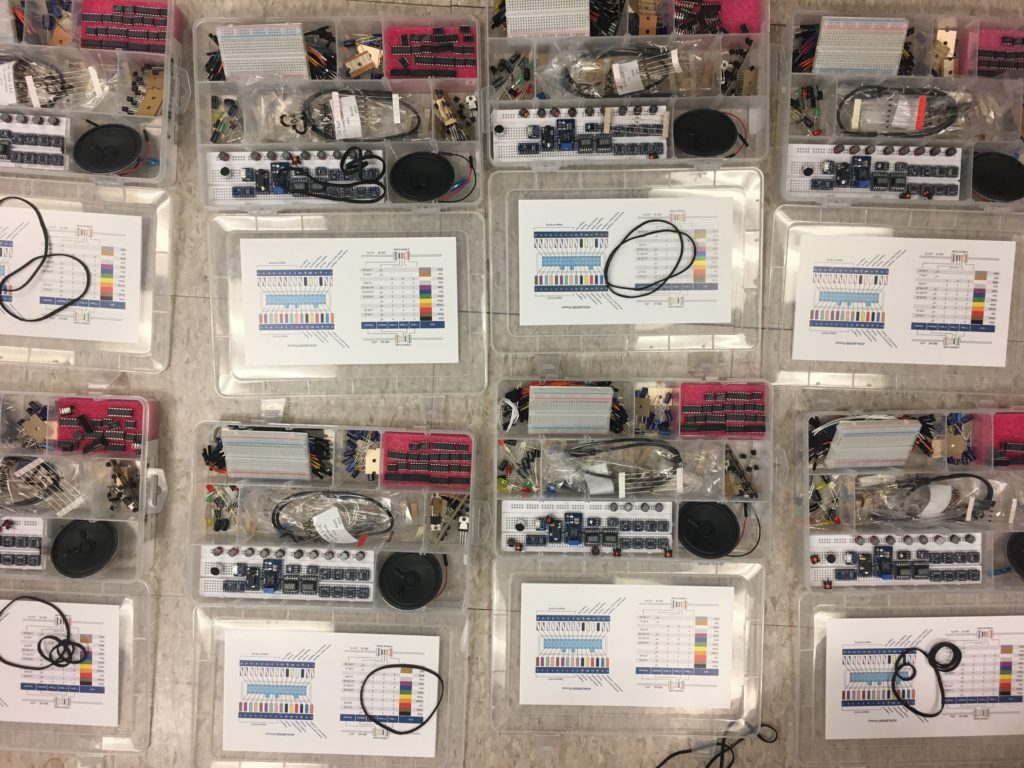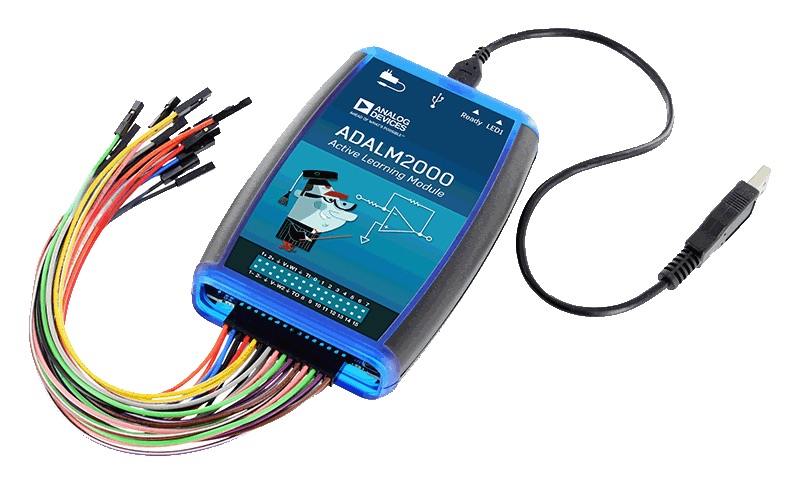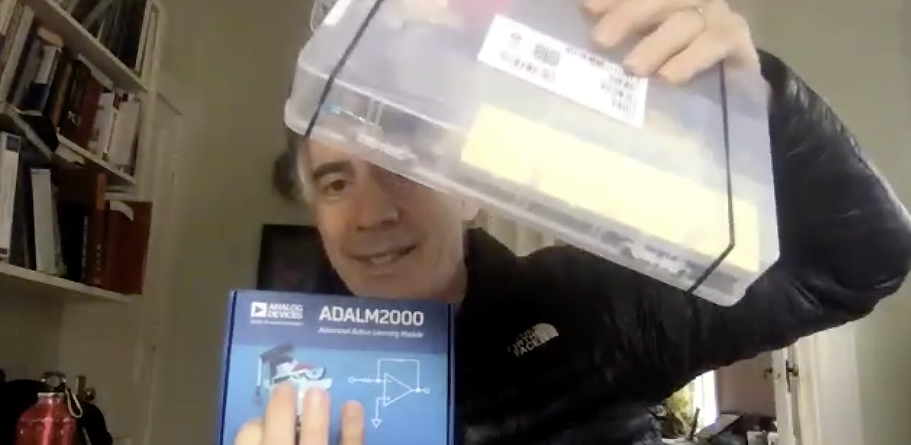ECE alum Dave Babicz pioneered the lab kits that became a staple for at-home engineering courses

As an electrical engineering undergrad at Michigan, Dave Babicz remembers being frustrated that he couldn’t take his lab projects home with him. He’d spend hours working on a project in the former home of EECS on Central Campus, but when the lab time ended, he’d have to store his progress for another day.
“I remember wiring up circuits and having to mash the wires down to fit into the slots in the cabinets when time was up,” Babicz said. “When you came back, they’d be all screwed up, and then you’d have to almost redo the whole thing.”
Throughout his nearly 30-year career at Analog Devices Inc. (ADI), where he currently serves as Director of Engineering, Babicz has remained interested in engineering education. Inspired by his own experiences, as well as research that suggests that students who use hands-on, at-home learning kits perform significantly better in the classroom, Babicz began designing low-cost engineering lab kits.
“It’s essentially giving students a lab they can carry around in their backpack,” Babicz said. “They can work on it whenever, like when they’re eating lunch, and it’s not getting messed up, because they’re taking care of it all the time. And this helps them learn and understand better.”
It’s essentially giving students a lab they can carry around in their backpack.
Dave Babicz
This method has been particularly important for improving equity in engineering education. Many programs that allow for hands-on experiences are dependent on advanced technology and lab space, which can be expensive. A team for FIRST Robotics, for example, can cost a school thousands of dollars to support. For schools that lack financial resources, such programs aren’t sustainable. Lab kits, however, can cost as little as $150.
“With these kits, we can put technology right into kids’ hands, and it’s not going to cost a lot,” Babicz said.
Babicz’ goal is to create a lab kit that can grow with the student, meaning the student purchases one kit at the beginning of their educational journey, and this kit is used throughout years of study.
“The idea is the kit would cover college level classes such as Circuits One, Circuits Two, Electronics One, and Electronics Two,” Babicz said. “It helps create continuity so you see how each course builds on the other, but also helps equity. It’s a one-time cost that serves you throughout your education.”

In addition to improving equity, this method of engineering education helps foster a stronger pipeline of future workers. In some ways, previous generations of engineers got to grow up with their own versions of at-home lab kits – their TVs, phones, VHS players, etc. But most of our technology today is too advanced for kids to take apart and put things back together like they could have 20 or 30 years ago.
“Kids show up as freshmen with no practical experiences,” Babicz said. “They’ve never soldered before, they’ve never built a circuit, they’ve never tinkered, so we wanted to recreate that experience.”
Babicz began piloting test kits in 2012 and has partnered with schools all over the world. When the pandemic hit, suddenly the demand went through the roof.
“Basic demand increased six-fold,” Babicz said. “Luckily, we had about 15,000 kits in stock, thinking they’d last us a year and a half, and they were all gone within a few months. But we managed to ramp up production and never ran out of kits.”
Michigan ECE incorporated Babicz’s kits in Analog Devices taught by Prof. Michael Flynn. The junior-level undergraduate course covers single-transistor amplifier design and analysis of circuits commonly used in wireless radios, audio amplifiers, and several other interface applications. The kits were overwhelmingly successful, and Flynn received top scores (4.9 out of 5.0) in his teaching evaluations, convincing him that lab kits should continue to be a part of the curriculum moving forward.

“The lab kits are the way to go,” said Flynn. “The students appreciate the chance to do stuff themselves rather than being scheduled in the traditional lab. And the quality of the equipment is very good.”
For Babicz, seeing his lab kits being used at his alma mater, where he first considered the idea, has been a satisfying full-circle experience.
“I like working with people, I like talking to people, and I like solving long range problems, and that all came from my time at Michigan,” Babicz said. “So I hope that people understand that this kind of hands-on learning saved them and that they adopt more of this into the curriculum, like Michigan is doing.”
 MENU
MENU 
